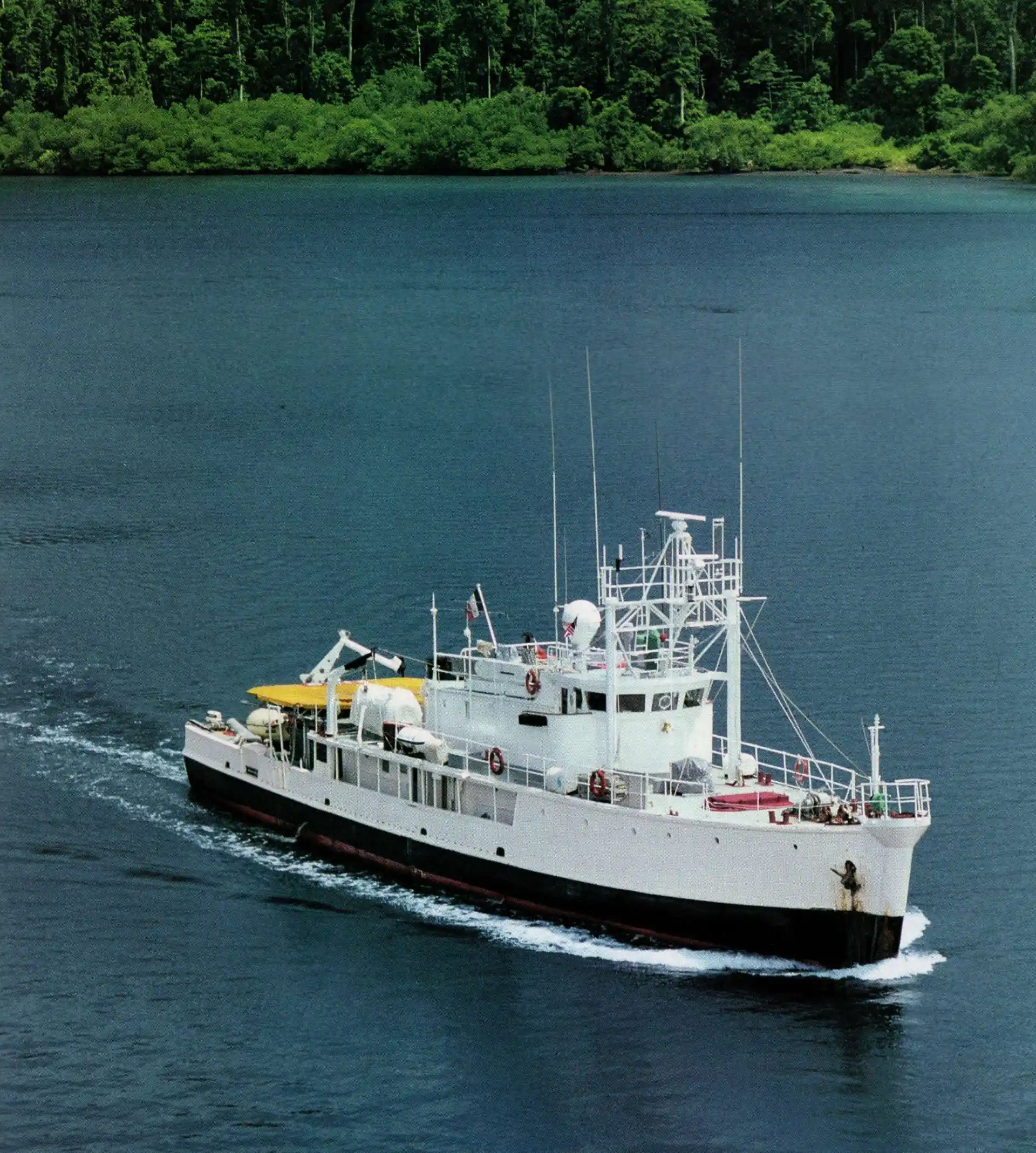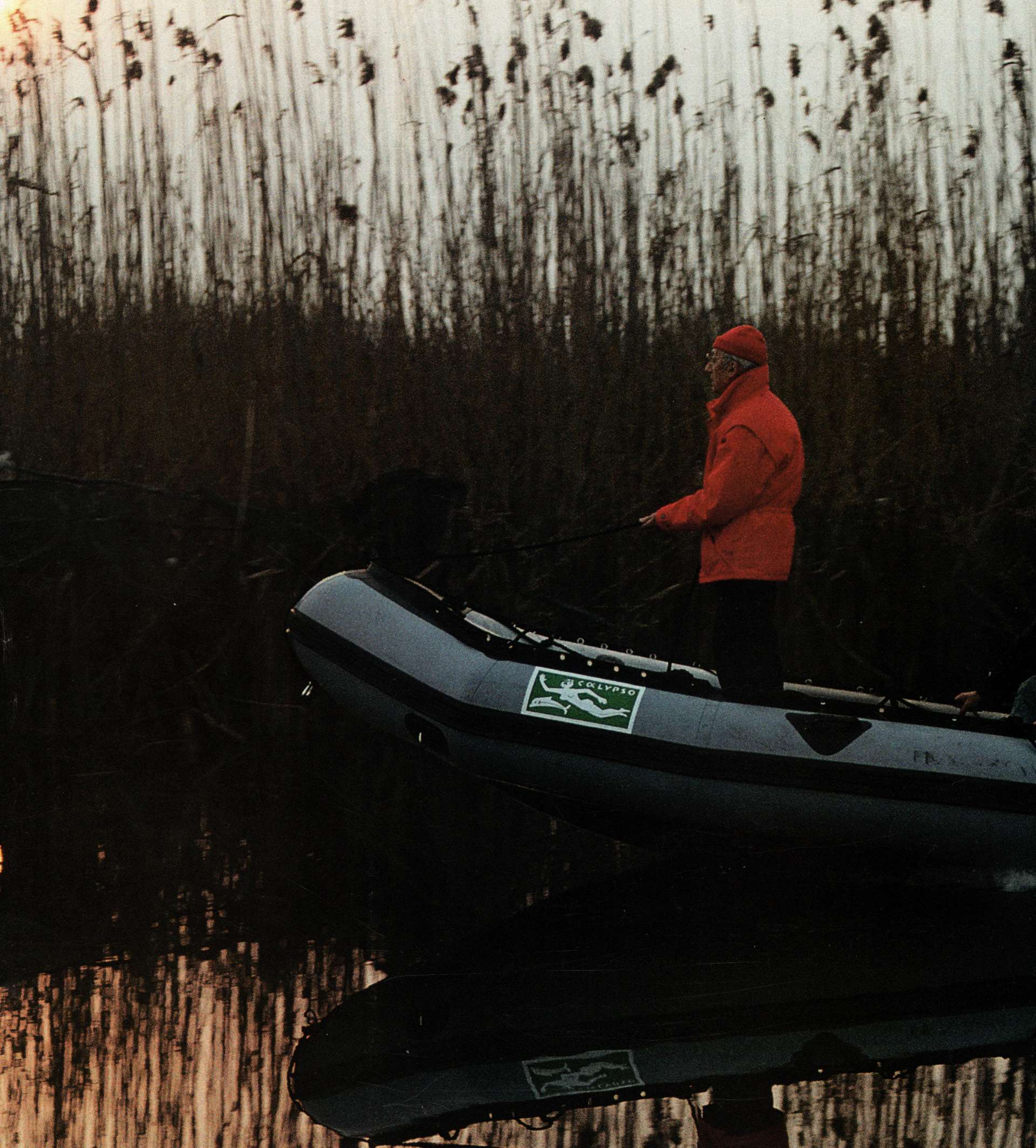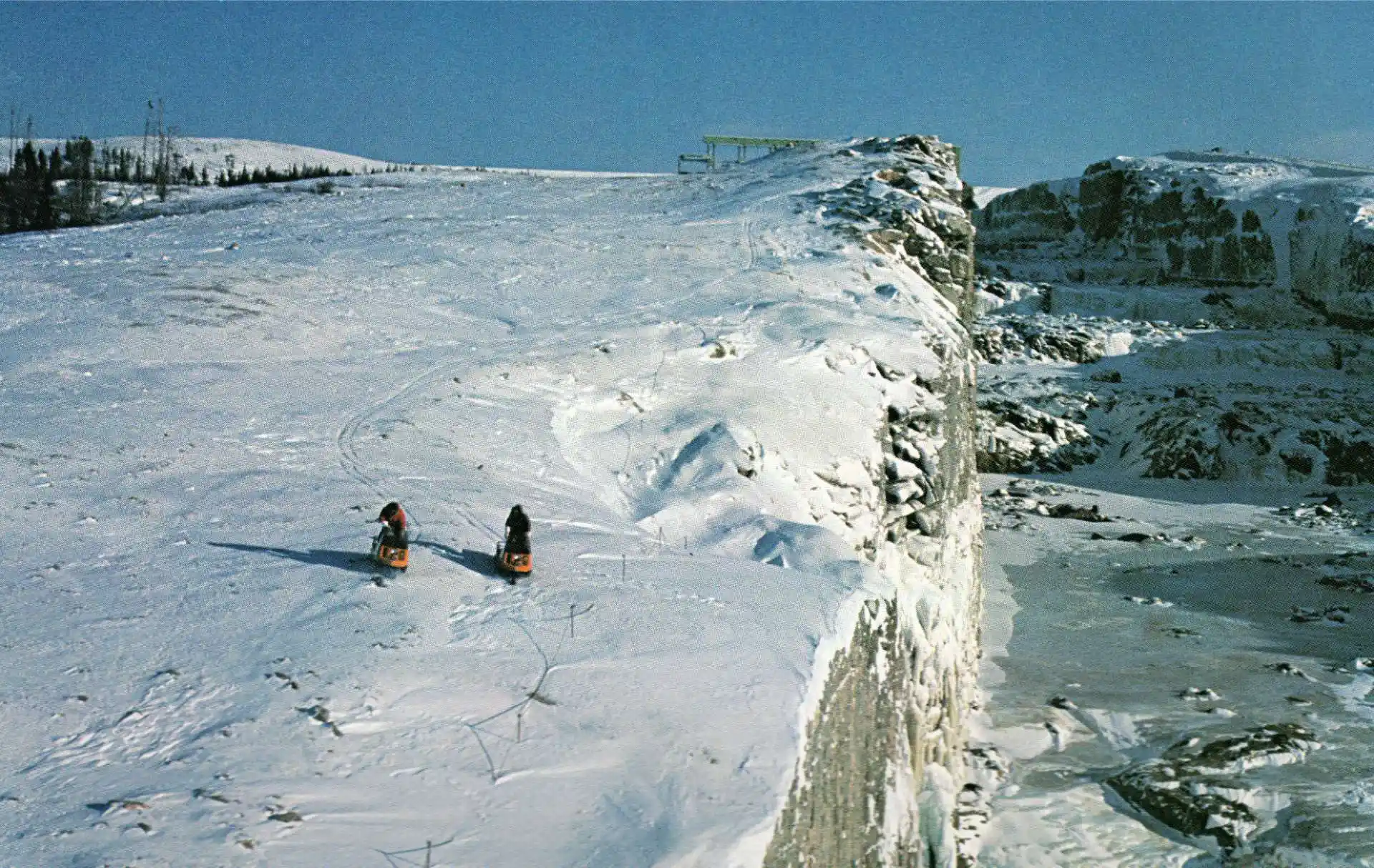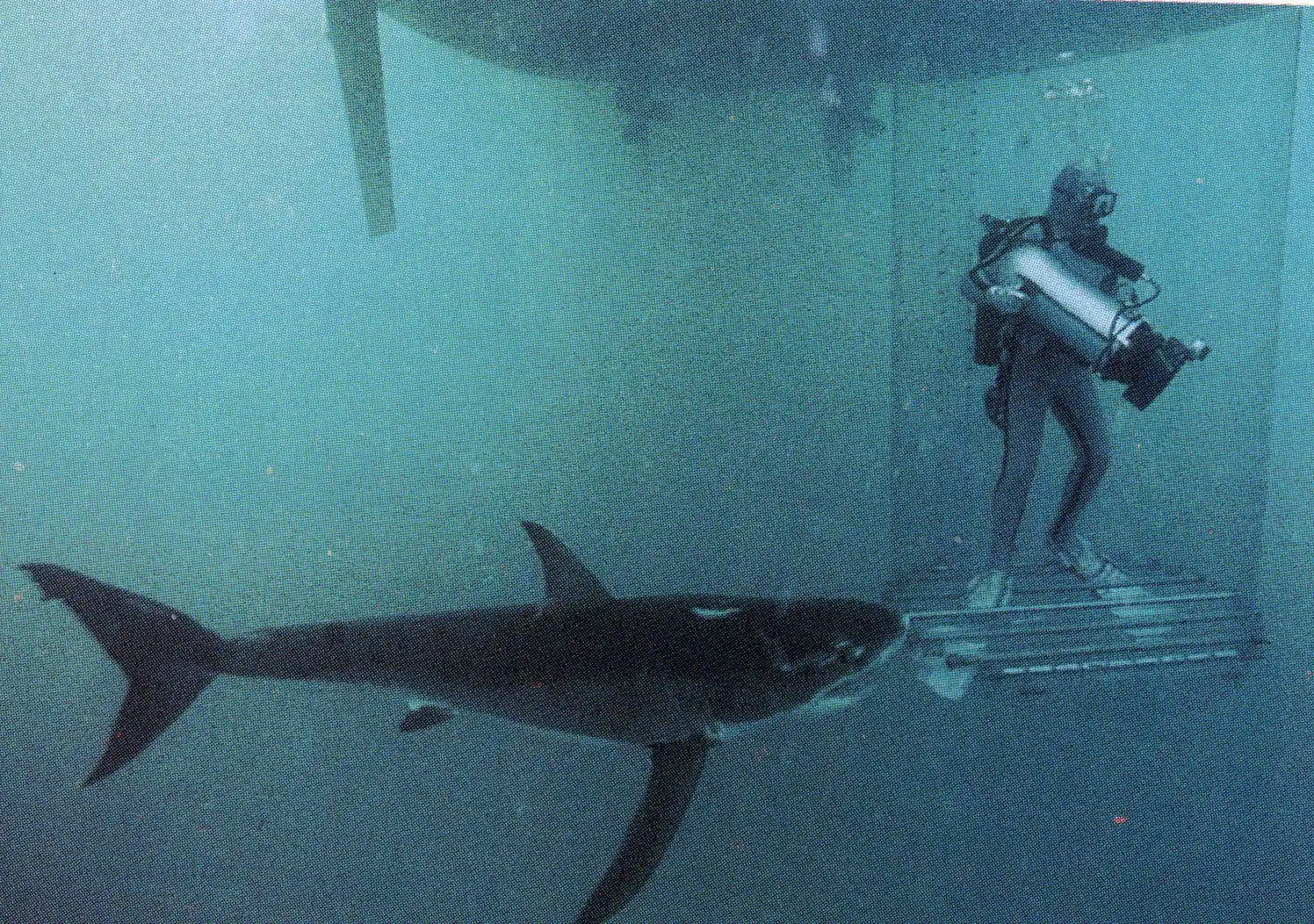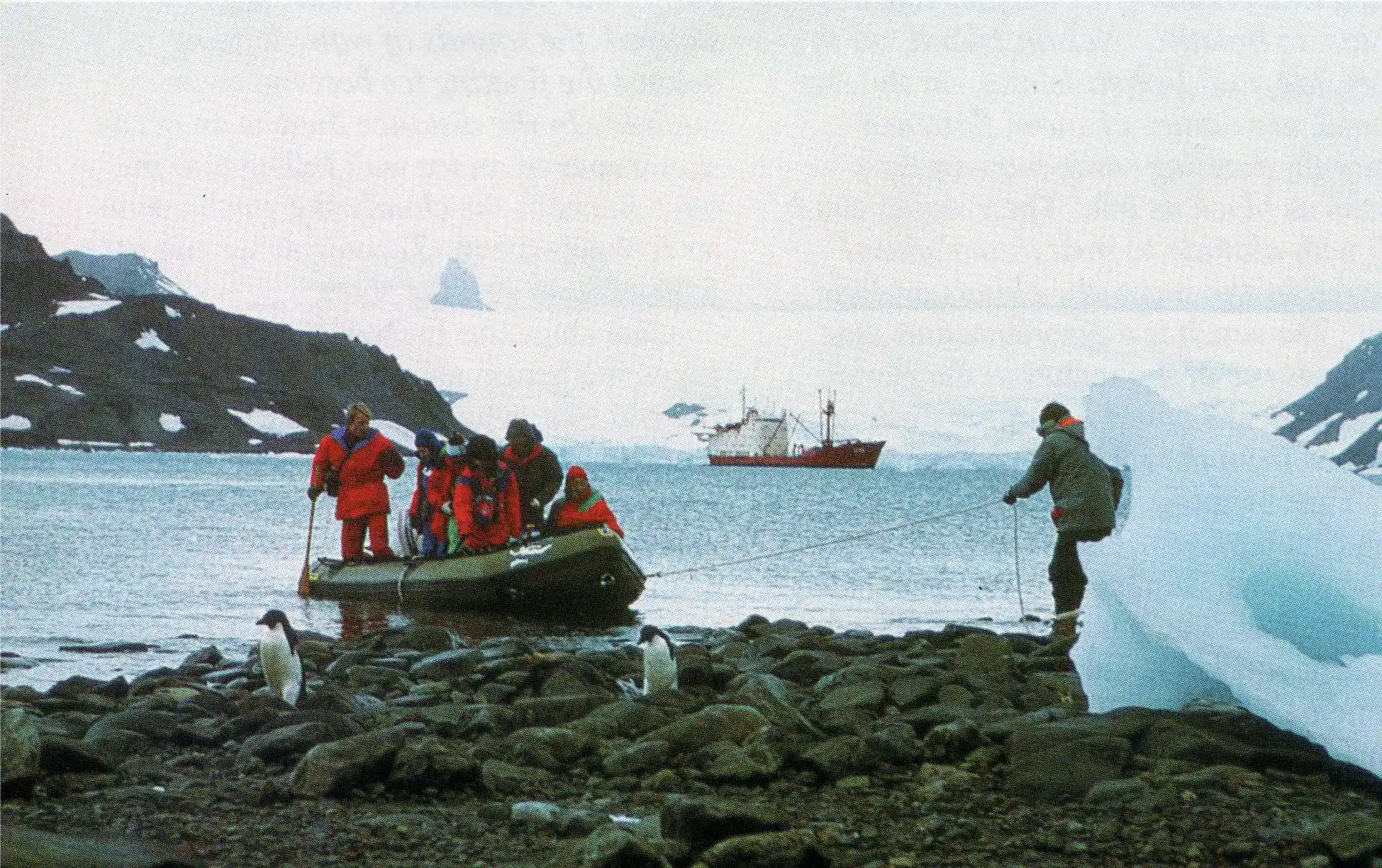Years: Late 1980s, 1990s
Key Achievements and Highlights:
- Marine Exploration
Captain Cousteau and the Calypso team embarked on an extensive exploration of the seas surrounding Australia, from the northern tropics to the cooler southern waters.- The Great Barrier Reef, consisting of 2,500 coral formations, served as the focal point for the underwater team. These coral structures, some as large as houses, are the skeletal remains of tiny marine organisms known as polyps.
- The team captured extraordinary footage of the reef’s vibrant ecosystem, including the annual mass spawning event where millions of eggs and sperm are released under the light of the full moon—a spectacle of synchronized life.
- Divers encountered unique marine species, such as saltwater crocodiles, venomous sea snakes, and lungfish, which blur the line between aquatic and terrestrial life.
- Land Exploration
While the marine team dove into the coral seas, a land team ventured into the Australian outback to learn about its unique wildlife and meet the Aboriginal people, whose culture is the oldest continuously practiced in the world.- Cousteau visited archaeological sites with ancient rock art depicting Dreamtime, the spiritual mythology of the Aboriginal people that explains creation and their deep connection to the land.
- The team observed how Aborigines work to preserve their identity and way of life, harmoniously intertwined with the natural world.
- Wildlife Encounters
- Australia’s unique biodiversity amazed the Cousteau team. They encountered kangaroos, the duck-billed platypus, and lungfish—species that illustrate the evolutionary isolation of the continent.
- The Alcyone crew spent two years studying great white sharks, offering new perspectives on these misunderstood predators, demonstrating their lack of inherent hostility towards humans despite their reputation as “dangerous” animals.
Key Films:
- The Great Barrier Reef
Legacy and Advocacy:
Cousteau’s explorations of Australia emphasized the incredible biodiversity of the region and its cultural richness. Through mesmerizing footage and powerful storytelling, he highlighted the importance of preserving the unique marine and terrestrial ecosystems of Australia, as well as respecting and supporting the Aboriginal communities who have stewarded the land for over 40,000 years.
Australia Expedition
Dates: Late 1980s to 1990s
Purpose: To explore the rich marine biodiversity of Australia’s waters, document the unique wildlife and ecosystems of the Great Barrier Reef, and highlight the cultural and ecological importance of Australia’s Aboriginal heritage.
Expedition Overview
The Cousteau team’s exploration of Australia spanned its vibrant oceans and vast, isolated interior. The Great Barrier Reef, a marvel of marine biodiversity, offered a stunning underwater spectacle of coral and marine life, while inland journeys introduced the team to the ancient culture of the Aboriginal peoples. Australia’s unique flora and fauna, shaped by millennia of geographic isolation, underscored its role as a living laboratory of evolution.
The expedition also served to redefine perspectives on Australia’s iconic species, from the great white shark to the kangaroo. Through innovative underwater footage and cultural interactions, the Cousteau team presented Australia as a treasure trove of biodiversity and a land of deep ecological and spiritual significance.
Key Findings
1. The Great Barrier Reef: A Living Wonder
- Spanning 2,500 coral formations and stretching over 344,000 square kilometers, the Great Barrier Reef is Earth’s largest coral ecosystem.
- The coral reefs, formed by the skeletons of microscopic polyps, support countless marine species, from vibrant fish to deadly sea snakes.
- The team documented the awe-inspiring coral spawning event, where millions of eggs and sperm are released under the full moon—a spectacle crucial to the reef’s renewal and resilience.
- Calypso’s divers explored “limestone forests” of coral, capturing the reef’s breathtaking beauty and complexity on film.
2. Unique Wildlife Adaptations
- The isolation of the Australian continent has given rise to extraordinary species, such as kangaroos, platypuses, and lungfish—living fossils capable of breathing both in and out of water.
- The team filmed saltwater crocodiles, deadly venomous sea snakes, and other species up close, highlighting their behavior and evolutionary significance.
- Alcyone’s crew spent two years studying great white sharks, portraying them not as mindless predators but as vital, misunderstood components of the marine ecosystem.
3. Aboriginal Culture and the Dreamtime
- Inland expeditions connected the team with Aboriginal communities, the world’s oldest continuous culture, dating back over 40,000 years.
- The Aboriginal concept of the “Dreamtime”—a spiritual framework for creation and connection to the land—offered insights into living harmoniously with nature.
- Visits to ancient rock art sites revealed a rich tapestry of history and mythology, linking people to the environment through art and storytelling.
4. Conservation and Environmental Challenges
- The Great Barrier Reef faces ongoing threats from climate change, pollution, and overfishing.
- Aboriginal communities struggle to maintain their cultural identity and traditional way of life in the face of modern pressures.
- The expedition emphasized the need for preserving Australia’s ecosystems and respecting its indigenous heritage to ensure the sustainability of its natural and cultural wealth.
Highlights
1. Films and Advocacy
- “The Coral Continent”: This film brought the vivid beauty of the Great Barrier Reef into homes worldwide, showcasing coral spawning, diverse marine life, and the fragility of this ecosystem.
- “Spirit of the Dreamtime”: A film that intertwined Aboriginal mythology with their environmental philosophy, offering a rare glimpse into their cultural practices and connection to the land.
- Shark Studies: The Alcyone team’s footage of great white sharks helped shift public opinion by portraying these apex predators in a new, less hostile light.
2. Interactions with Aboriginal Communities
- The team celebrated the Aboriginal people’s deep understanding of the land and sea, recognizing their knowledge as vital to sustainable living.
- By highlighting the threats to Aboriginal culture, the expedition raised awareness of the importance of indigenous rights and ecological stewardship.
3. Marine and Terrestrial Biodiversity
- The Great Barrier Reef served as a microcosm of marine biodiversity, while the Australian outback revealed unique terrestrial adaptations.
- Encounters with iconic species, like kangaroos and the platypus, reinforced Australia’s significance in global conservation.
Challenges Encountered
1. Marine Hazards
- Encounters with venomous sea snakes and saltwater crocodiles required caution and preparation.
- Diving amid great white sharks tested the nerves and skills of even the most experienced divers.
2. Fragility of Ecosystems
- The team observed coral bleaching events, a harbinger of climate change impacts on marine ecosystems.
- Pollution and tourism pressures highlighted the need for improved reef management and conservation.
3. Cultural Preservation
- The expedition documented the struggles of Aboriginal communities to maintain their traditional ways of life in the face of modern development and marginalization.
Conclusion
The Cousteau team’s Australian expedition highlighted the immense natural and cultural wealth of this unique continent. From the vibrant coral cities of the Great Barrier Reef to the profound spiritual wisdom of the Aboriginal Dreamtime, the expedition underscored the interconnectedness of life on land and sea.
Australia’s ecosystems and cultures are both treasures and responsibilities, requiring global cooperation to preserve their legacy for future generations. Through stunning cinematography and cultural exploration, the expedition fostered a deeper appreciation of Australia as a place of unparalleled beauty, biodiversity, and ancient wisdom.
